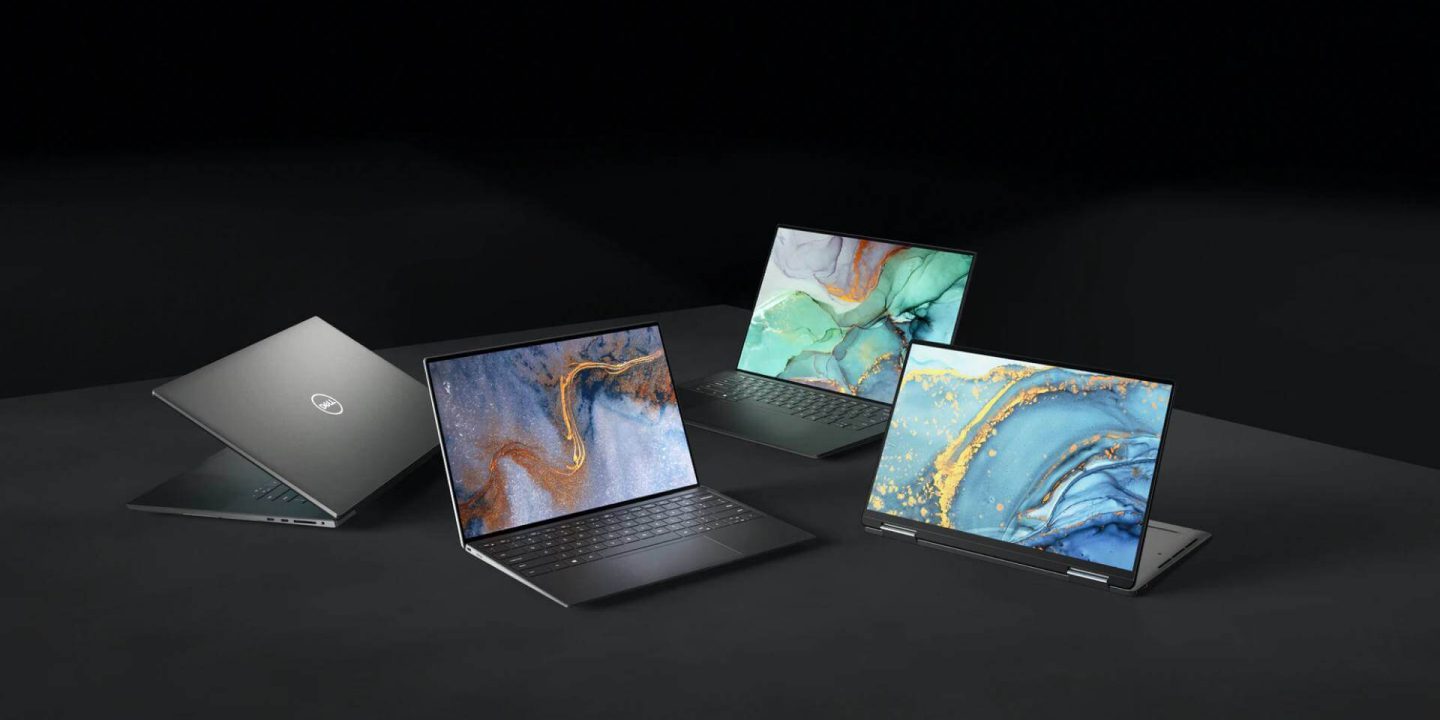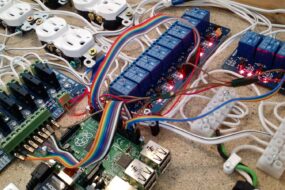
The MacBook Air is Apple’s most popular Mac laptop with its blend of performance, low entry price, and portability. The latest update in late 2020 gave it 3.5x the processing power with up to six hours of extra battery life thanks to custom Apple Silicon.
Due to its lower entry price, the MacBook Air has been a popular choice for education markets. Apple targets the lower price and portability above all else when designing its thin and light laptop.
When Apple introduced the M1 processor in the updated Mac lineup, it changed little else. It is rumored that a radical redesign similar to the 24-inch iMac is due in the new MacBook Air.
MacBook Air Features
When Apple transitioned the MacBook Air to the M1 processor, it altered little else about the device. It has the same 13.3-inch Retina Display with P3 color gamut and 400 nits of brightness.
Apple included two Thunderbolt/USB-4 ports on the side, which are a new spec above the previous Thunderbolt 3 ports. These enable wider compatibility with modern USB Type-C cables but are functionally the same.
The tapered case design goes from 0.63 inches to 0.16 inches to give the device an even thinner overall look. Even though Apple still calls this device the “air” for its size and weight, it is thicker than the 13-inch MacBook Pro at its thickest point.
At 2.8 pounds, it is the lightest laptop Apple sells. Even the iPad Pro and Magic Keyboard weigh in at 3 pounds, the same as the MacBook Pro.
Even thought this model has two USB-C ports, it can only connect to one external display at a time. This limitation will likely be addressed in future models once Apple releases its next-generation processor.
M1 processor
Apple’s custom processors have powered the iPhone and iPad for years, and now Apple Silicon has made it to the Mac. The new processor pushes the M1 MacBook Air to new heights, making it outperform most existing Intel Macs, even the 16-inch MacBook Pro.
Apple says the new MacBook Air is up to 3.5x faster with 5x faster graphics than its predecessor. The claim stands up to benchmark scrutiny. Its single-core performance competes with Apple’s high-end Mac Pro, and its multi-core score is higher than all Macs except those with more than 8 cores.
The M1 chip’s balance of power and efficiency allows the new MacBook Air to be fanless, offering silent performance. The big-little layout of the eight-core processor makes it easy on power consumption but able to kick in performance cores when necessary. The efficiency cores by themselves outperform the Intel Core-i3 processor.
It runs macOS which has been overhauled to support the new M1 processor. macOS Monterey introduced new features like SharePlay and Universal Control to bring more utility to users steeped in the Apple ecosystem. Users can also run apps originally designed for iOS and iPadOSthanks to the processor.
Magic Keyboard
Apple has moved its entire lineup to the new Magic Keyboard first introduced in the 16-inch MacBook Pro. A redesigned scissor mechanism with 1mm of travel means no more sticky keys from previous generations. The new keyboard also included the inverted-T arrow keys.
Previous generations housed a butterfly keyboard, which had multiple updates and changes to attempt to address reliability issues. The butterfly switch was prone to stuck keys or broken mechanisms, leading to a higher failure rate than previous scissor-switch designs.
Apple had implemented keyboard repair programs for the butterfly keyboard, but the introduction of the new keyboard seems to be a final admission that there was some issue at hand. Even the latest iPad Pro keyboard uses the new Magic Keyboard design.
720p Webcam
The late 2020 model with M1 chip offers improved video-chat capabilities. While the laptop still has a 720p webcam, the M1 chip uses Apple’s newest image signal processor (ISP) for improved image quality.
The new ISP adds greater dynamic range, better noise reduction, and superior auto white balance and machine-learning-enhanced face detection to make you look clearer in FaceTime or Zoom calls. That translates to improved video in low-light conditions.
Security
The 2018 revision incorporated a Touch ID sensor for biometric identification. Touch ID has remained on the 2019 and 2020 refreshes and will likely be part of the MacBook Air until Apple possibly implements Face ID in a future model.
The T2 security chip is a separate piece of custom Apple Silicon that, for some key operations, sits between the Intel processor and macOS. It hosts the Secure Enclave for Touch ID and provides encryption services to macOS. The T2 chip also provides a secure boot, meaning the only processes that can run at startup are trusted and approved macOS software.
Possible 2022 Redesign
The MacBook Air has maintained a slim, wedge-shaped design for years. It was unable to be altered more due to Intel’s processor limitations. Now that Apple Silicon is in the Mac, Apple can take on a few more design changes.
When Apple first added the M1 processor to its laptops, no external design changes were made. Apple likely didn’t want to scare potential customers away with too many major changes in the first Apple Silicon Macs. However, with the release of the 24-inch iMac, Apple has opened the doors to a new design language.
It is expected that future MacBook Air Models will slim down even further, lose the wedge shape, and have multiple colors to choose from. Other changes would include a white keyboard and off-white bezel around the display.
Apple will likely wait until it has completed the transition to Apple Silicon before releasing a redesigned MacBook Air, so 2022 is the earliest such a redesign will take place.
MacBook Air History
Third generation
In October 2018, Apple redesigned and rebooted the MacBook Air after nearly a decade of selling models with the second-generation design.
The third-generation model added a Retina Display, Touch ID, and three color options. It essentially replaced the 12-inch MacBook, which Apple phased out of its lineup in the following months. This design has two Thunderbolt 3 ports, a 13.3-inch display at 2560 x 1600 resolution, and – initially – the maligned butterfly keyboard.
A March 2020 update added faster 10th-generation Intel processors, the Magic Keyboard, and a lower $999 starting price. That model had a less-than-ideal cooling setup, as many users complained about its fans kicking in frequently. In hindsight, that may have been because Apple was prioritizing a significant hardware update for later that year.
In November 2020, Apple ditched Intel, launching an updated model with Apple Silicon. The M1-powered Macbook Air brought much-improved performance and battery life. Apple promised up to 3.5x faster processing power than the previous generation, with up to 5x the graphical performance. Its battery can last up to 15 hours of web browsing. This update also removed fans, allowing for silent operation.
Second generation
n 2010, Apple released the second-generation models with a tapered case and solid-state storage. There were 11-inch and 13-inch options.
This generation was well-received, helping to push the design into the mainstream. Within the next five years, the market was flooded with clones, and Microsoft later coined the name “Ultrabook” to denote Windows laptops that borrowed heavily from the MacBook Air.
With each update, Apple added more internal memory and faster processors. This was the last generation to include non-Retina displays and a MagSafe port.
Apple discontinued the 11-inch model in 2017 and the second-generation 13-inch model in 2019.
MacBook Air Price Guide
The late 2020 MacBook Air with M1 chip starts at $999. This model has 8GB of RAM and 256GB storage. For $1249, you get an M1 chip with an additional active GPU core and 512GB storage.
A maxed-out model with 16GB of RAM and 2TB SSD costs $2,049.









